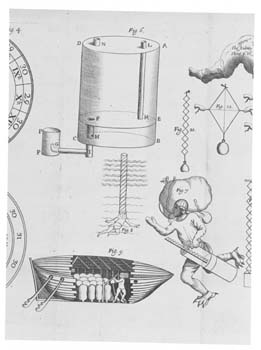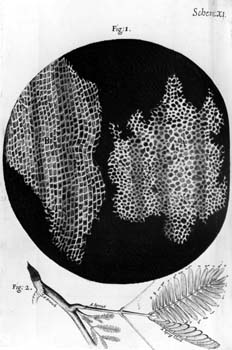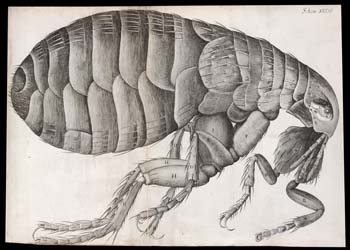A magazine where the digital world meets the real world.
On the web
- Home
- Browse by date
- Browse by topic
- Enter the maze
- Follow our blog
- Follow us on Twitter
- Resources for teachers
- Subscribe
In print
What is cs4fn?
- About us
- Contact us
- Partners
- Privacy and cookies
- Copyright and contributions
- Links to other fun sites
- Complete our questionnaire, give us feedback
Search:
Hooked on science
Robert Hooke had a real passion for science. Best remembered for his law that relates the force in a spring to its extension, he was by no means just a physicist.


He was born on July 18, 1635, at Freshwater, on the Isle of Wight, the son of a churchman. He went to Westminster School at the age of thirteen, and from there went to Oxford where he impressed them with his skills at designing experiments and building equipment. His talent for building useful things led to him becoming the Curator of Experiments of the newly formed Royal Society of London. This job meant he had to demonstrate new experiments at the Society's weekly meetings, which gave him a chance to experiment himself. He invented or improved meteorological instruments such as the barometer for measuring pressure, the anemometer for measuring wind speed, and hygrometer to measure moisture in the air. The job also made use of his talent for drawing, as he sketched people's inventions such as the above walking cart (though he was sceptical of this particular invention, noting that wheels were likely to be more practical).

Another of his many inventions was the compound microscope, at the time the best microscope in the world. With it he started to look at all manner of natural things, and was the person that gave us the word 'cell' in biology; looking at a bit of cork under his microscope he saw that the structure looked like 'cells (rooms) in a monastery'. The term stuck. His book Micrographia, published in 1665 was decisive in the development of field of biology. Like may great thinkers Hooke had his critics, one wrote he was "a Sot, that has spent £ 2000 in Microscopes, to find out the nature of Eels in Vinegar, Mites in Cheese, and the Blue of Plums which he has subtly found out to be living creatures." Its interesting to wonder where would the world of science be now if Hooke hadn't played with his food.
His feud with Issac Newton meant that when Newton took over as the President of the Royal Society he destroyed all the pictures of Hooke. However The Royal Society have kindly provided us with picture of some of the remaining sketches of Hooke to include in this page. Hooke had all the characteristics of a good scientist, creativity, determination, attention to detail and talent. So the next time you suffer eels in your vinegar or mites in your cheese its thanks to Hooke we know they are there.

Hooke and Newton
Hooke v NewtonThe Maze

You take the lift. It takes an eternity to arrive.

Down a hole you can see the whole earth in minature.


